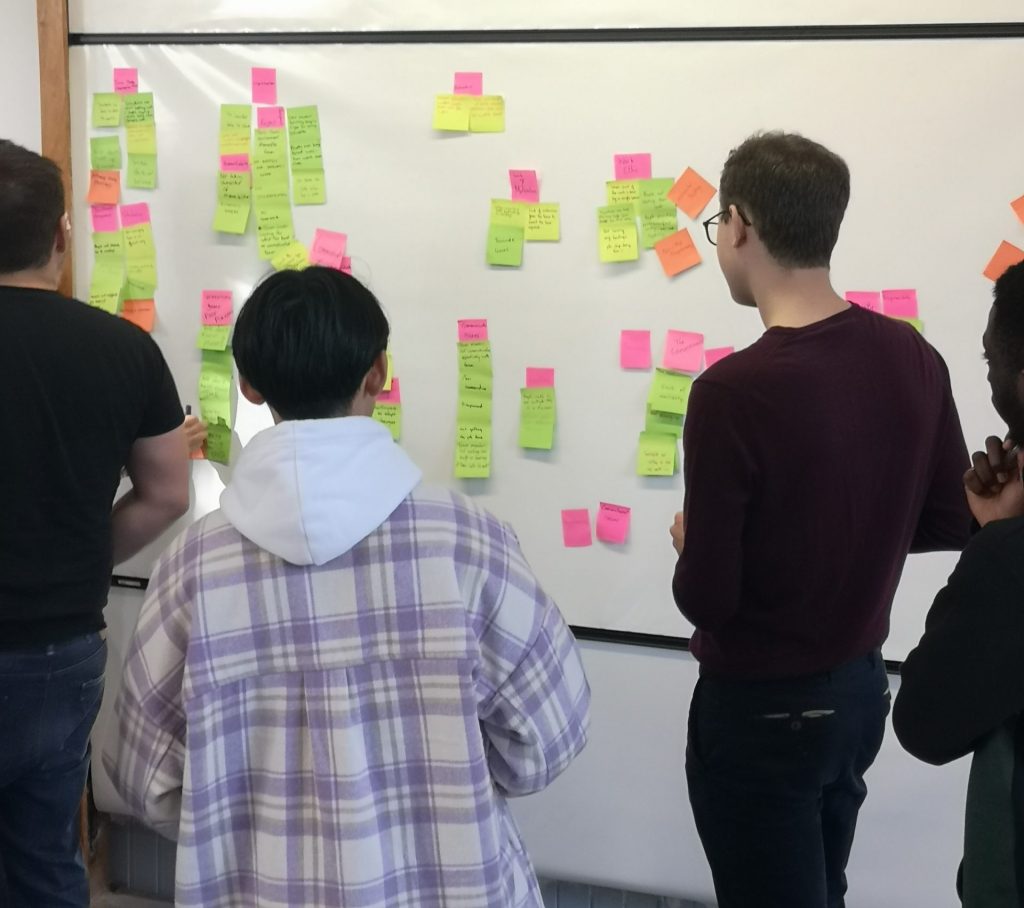Make teaching more interactive with facilitated experiences
One of my key goals for each teaching session I run is to have a facilitated component. This can be as simple as pausing to have students talk to someone around them to compare their thoughts, or as complicated as running a short game in the classroom. The main things are (a) I can stop talking for a bit, and (b) the students learn from the experience. This assumes that they have accepted the invitation to participate as mentioned elsewhere.
Facilitation aids participation
Facilitation is something you’re probably doing already in your classroom: this happens every time you ask the students to do something. You can do more than the basics too, and often have a better outcome with more participation from students.
There are many ways to do this, so I’ll just work through the main sources that I’ve found useful as an educator and facilitator teaching software engineering.

Use games to illustrate the context
There are lots of agile games that can be used to let students experience various aspects of the process. You can find many at Tasty Cupcakes. The issue at the moment, is that the search system needs improvement. Come back here if you find the name of the game you want to try, but haven’t found the details elsewhere. The people behind Tasty Cupcakes, are working on improving the site, so it should start to be easier to use.
You can also find games and activities to use at https://gamestorming.com, and https://www.liberatingstructures.com, or get the books too. The opening chapters of the book guide you through using diverging and converging games too. With this you can set up a number of them to feed a creative process for your participants. Both of these provide lots of useful examples. There is also plenty online to support them too.
Similar to the the above tools are the Innovation Games from Luke Hohmann. You can also find these detailed online. These take longer, but are worthwhile if you’re trying to gather information from participants about the future direction of something.
Moving in another direction are activities from improv theatre, which can be used to make participants more aware of their choices and assumptions. You should also read some of the books by Keith Johnstone on improv if you want to go further in this direction. Similar to these are also https://www.handgames21.com, which I’ve only recently discovered, so not yet tried.
Activities get people talking
Use these activities to add interaction to your classroom. Yes, it will get loud. Yes, this is good. Depending upon the class, you might want to have people do these things in their teams. If not, then that works fine too.
You just need to find a game that illustrates the concept, or issue that you want students to experience. Get the details, print them out, and have them available for reference. Then just be brave and use the game.
As you run it, remember this: the students don’t know how it was supposed to go. So, if you forget something carry on, and modify the activity accordingly. Facilitate the session to a suitable conclusion. Next time you’ll do better.
The debrief is important
After the game debrief the participants to have them consider the experience. I often use 1,2,(4,) all for this. It’s easy and inclusive. Ask students to then compare their ‘take away’ with that of a neighbour. Ask for others to share with the class, and then feed back to them what you wanted them to learn.
Find a game or activity, and get started changing your classroom sessions.
This post is part of a project pulling together my materials and ideas about Teaching Team Collaboration: the Human-Side of Software Development for software development to students. If you’d like to be notified of future posts, then please sign up for more using the adjacent form.